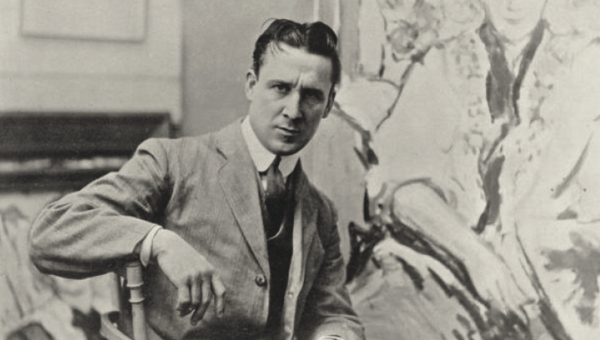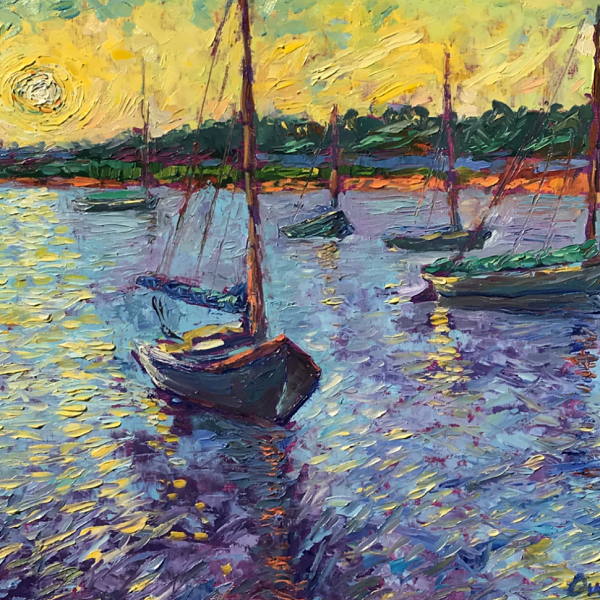THIS WEEK’S MUSE
JOHN DUNCAN FERGUSSON, ARTIST

“I remember when I was young any colour was considered a sign of vulgarity. Greys and blacks were the only colours for people of taste and refinement. Good pictures had to be black, grey, brown or drab…”
John Duncan Fergusson was one of the four Scottish Colourists, a loose collective of stylistically diverse artists who shared a passion for the vibrant confidence driving through European art in the early 20th century.
Born in 1874 in Leith, a small port town north of Edinburgh, Fergusson was a self-taught artist who abandoned ambitions to become a surgeon for a bohemian life as a painter.
Fiercely resisting the accepted routes, he looked to the so called ‘Glasgow Boys’ for inspiration – a group of anti-establishment painters who were passionately against the academic teaching of the arts. Stylistically, they favored liberal use of paint, thick brushwork, and an unconventionally darkened palette.
He traveled to Morocco, Spain and, in 1898 arrived in Paris. Over the next two decades he immersed himself in the creative culture that surrounded him, and success came. By the outbreak of World War I, Fergusson was considered to be at the forefront of modern British painting.
While each of the Colourists’ work is distinct, they shared technical methodologies derived from these developments in Paris and across Europe. The influence of Cubism, Post-Impressionism, Fauvism, and Futurism can all be identified in their work – experimentation with light and shade, two-dimensional brushwork, bold use of color were commonalities they shared and provoked in each other.
After a number of years in London, Fergusson returned to Scotland in 1939, this time to Glasgow. Here he founded the New Scottish Group, a loose collective of likeminded artists that shared left-wing politics and a continued appetite for contemporary European art.
He maintained his Colourist philosophy of painting with bright colours, eventually removing black completely from his palete.
Alongside the other Colourists, the radical work of Fergusson invigorated and energized the Scottish art scene with the dynamism, vibrancy and color rarely seen before. Moreover, he breathed new life into British art, paving the way for the next generation of artists, many of whom drove the pop art movements of the 1950s and ‘60s.
Throughout his career, his work was infused by a rebellious, independent style, maintaining his belief in freedom of expression and a passionate commitment to the creation of modern, non-academic art.
“…Well! Let’s forget it and insist on things in Scotland being of colour that makes for and associates itself with light, hopefulness, health and happiness.”
HAPPENING
Four Tuesdays, from July 18, 4–6:30pm

GOLDEN HOUR PLEIN AIR
With Susan Overstreet
Paint and soak up that perfect light just before sunset.
Member: $140, Non-member: $160
